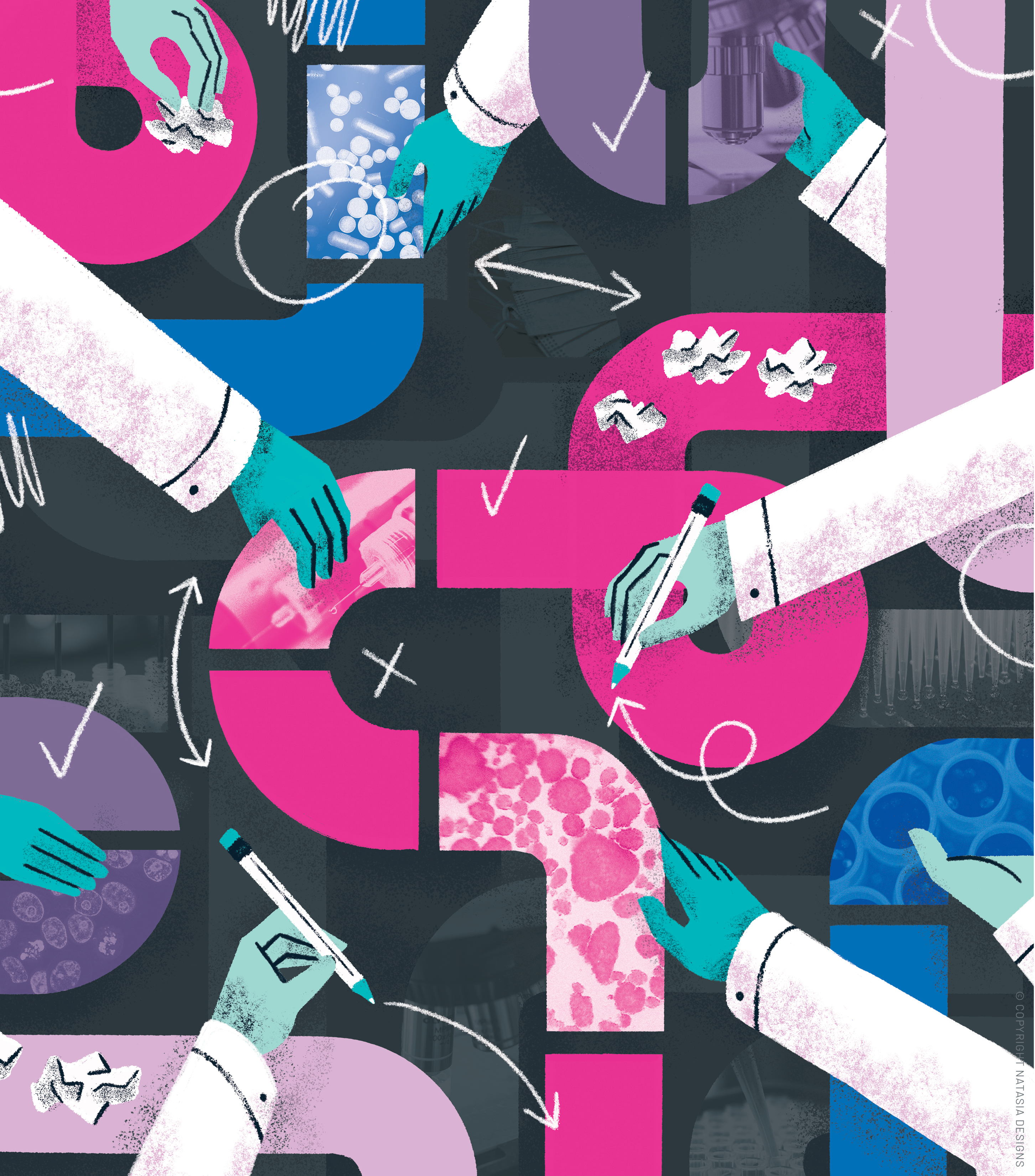
Twenty years ago, U of A scientists transformed Edmonton into the world's leading light in the quest to cure Type 1 diabetes. Now they're at it again.
Illustration: Natasia Designs
In the summer of 2000, a global spotlight shone on Edmonton. A small team of University of Alberta researchers had done what until then had been impossible, helping patients with Type 1 diabetes become insulin-independent at an unprecedented success rate of 100 per cent. Termed the "Edmonton Protocol," the procedure became a ray of hope for those suffering from diabetes worldwide.
Few understood the setbacks that had been overcome to get to that point. Even fewer could have predicted the lows and highs yet to come. But Ray Rajotte, '71 BSc, '73 MSc, '75 PhD, professor of surgery at the U of A and the founder of its Islet Transplant Group, experienced it all.
Steering through rough waters to lay a course forward
The foundations of the Edmonton Protocol were built through the pioneering work Rajotte began in 1972, 28 years before its breakthrough success. A U of A biomedical engineer back then, Rajotte attended a lecture by American researcher Paul Lacey, who had cured diabetic rats by transplanting the islet cells of healthy rats into them. In that moment, Rajotte saw a new path for his work in the isolation and cryopreservation of islet cells, with the hope it might one day have application in humans.
Over the next several years, Rajotte spent his time in research labs scattered across the United States learning all he could about isolating islets. In 1979, he returned to the U of A to join the departments of surgery and medicine, and began working toward moving his efforts from animal to human islets. He also assembled the team that would make up the initial Islet Transplant Group alongside him: then graduate students and surgical fellows Garth Warnock, '74 BScMed, '76 MD, '83 MSc, and Norman Kneteman, and endocrinologist Eddie Ryan.
Together, the team hypothesized that if donor islets could somehow be isolated, they could be injected into the liver. There, they would become revascularized and perform their duties as usual, away from the besieged pancreas, where a diabetic's immune system inexplicably attacks healthy islets. With any luck, such a transplant-accompanied by a proper anti-rejection drug regimen-could allow a Type 1 diabetic to be free of insulin injections.
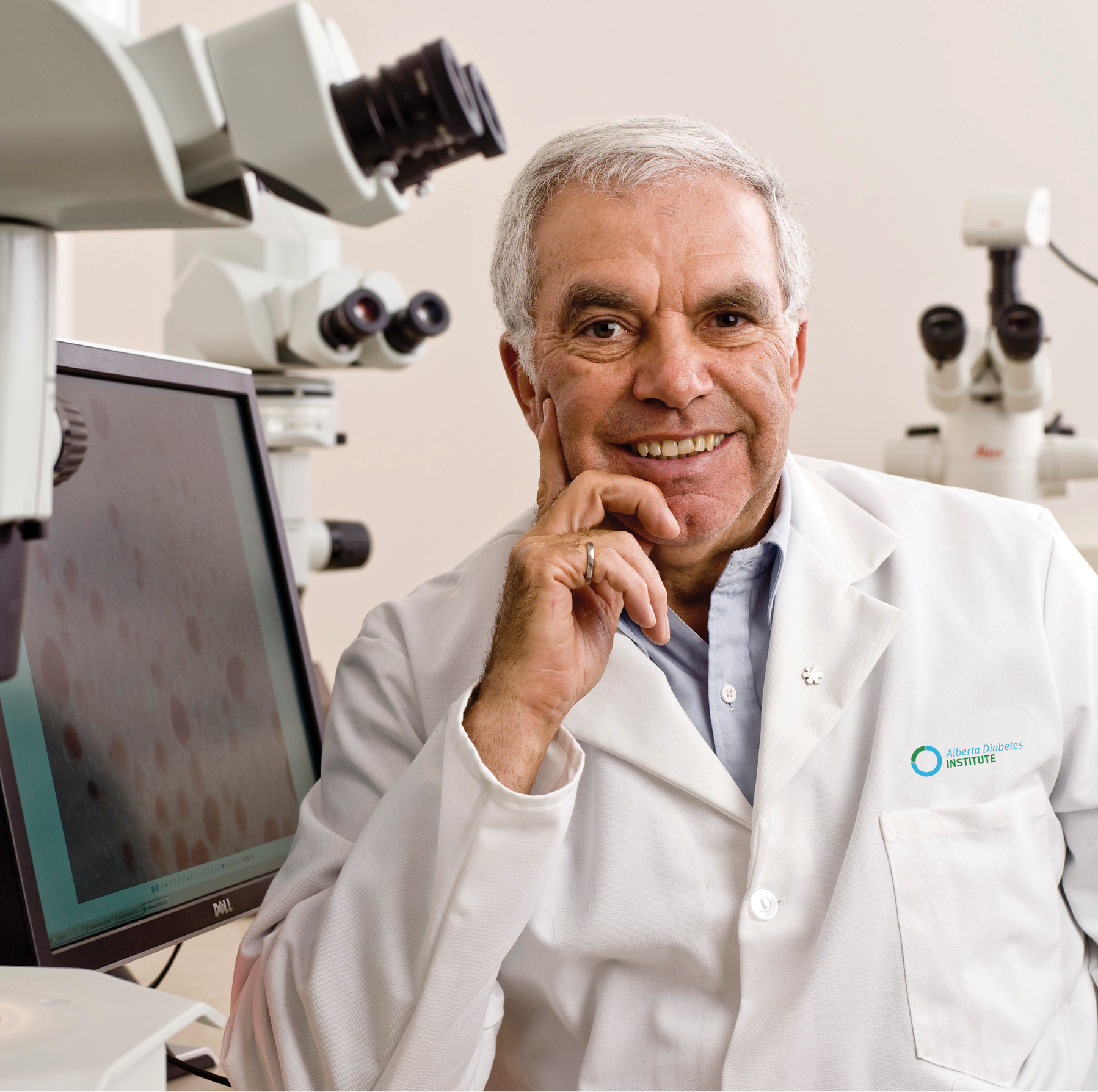
Ray Rajotte is founder of the U of A's Islet Transplant Group.
Photo: Laughing Dog Photography
By the late 1980s, Rajotte's team felt it was finally ready for the next step-a clinical trial of human islets. In 1989, the group carried out Canada's first islet transplant.
"The first patient we transplanted, his insulin requirement went down, but he didn't quite get off insulin," says Rajotte. "The same thing happened in a second patient."
For a third patient, the team adjusted their methods, doubling the number of islets being injected and using a mixture of fresh and cryopreserved islet cells. This time, the patient achieved insulin independence for two and a half years.
"In all we did five islet transplants," says Norman Kneteman, '78 MD, '85 MSc, now director of the Division of Transplantation Surgery at the U of A. "Among those five we had two patients that we managed to get off insulin for extended periods of time. Those were some of the first in the world to achieve insulin independence … but the success that we had was not prolonged."
"Worldwide there were probably about 260 transplants carried out and only eight per cent of the patients got off of insulin," adds Rajotte. "Eight per cent just wasn't good enough."
They needed to go back to the drawing board.
So the U of A scientists returned to the lab, suspending islet transplants to refocus on advancing the science before bringing it back to patients.
"There was a period of time where we wondered how to go forward," says Kneteman.
For five years work continued in labs, yet the clinical program lay fallow. It needed a fresh start and reinvigorated leadership-which came with the arrival of a promising young surgeon from England.
Capturing the world's attention
In 1993, James Shapiro, MD, '01 PhD, was recruited to the U of A as part of a transplantation fellowship. While in Edmonton, Shapiro also worked on his PhD, studying new anti-rejection drugs and steroid combinations for possible testing on islet transplantation. He would go on to posts in Vancouver; Kyoto, Japan; and Baltimore, Maryland before being recruited back to the U of A in 1998 to lead and rejuvenate what had then become a stalled Clinical Islet Transplant Program.
"I personally really didn't have a lot of hope that islet transplantation was ever going to succeed," says Shapiro, Canada Research Chair in Transplant Surgery and Regenerative Medicine and member of the Alberta Diabetes Institute and Alberta Transplant Institute. "When (it was) passed on to me, there was very little enthusiasm to drive forward a program where the global results were only a dismal eight per cent."
The team, bolstered with the key additions of Jonathan Lakey, '95 PhD, and Greg Korbutt, '85 BSc, '88 MSc, PhD-now a professor of surgery at the U of A, scientific director of the Alberta Cell Therapy Manufacturing Facility and a member of both the Alberta Diabetes Institute and Alberta Transplant Institute-made two large modifications to the procedure. Where the initial wave of patients had all previously had a kidney transplant, the team decided the next wave of patients would not. This change gave the team complete freedom to use anti-rejection drugs of their choosing, and new drugs were chosen in the hopes they would be less toxic to the islets.
"My contribution was leading this clinical team, but also throwing the kitchen sink at the protocol," says Shapiro. "From where I stood there was absolutely nothing to lose."
"Normally when you do a scientific experiment, you change one variable and you see if it has an impact or not. But I didn't think one variable on its own was ever going to make a difference."
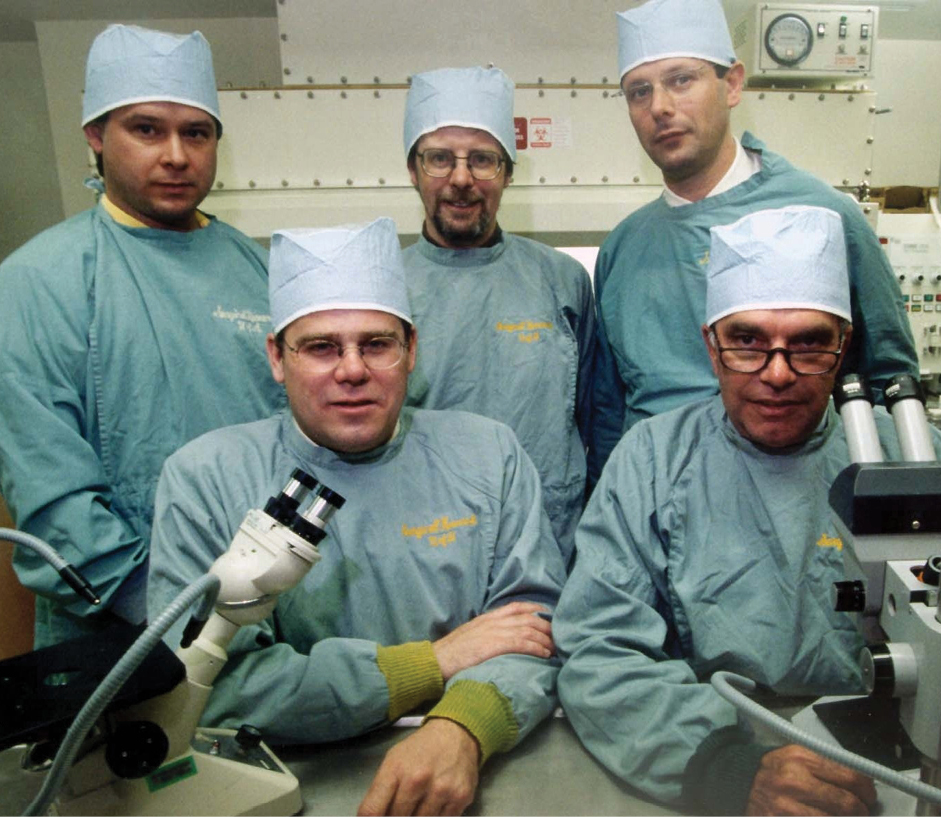
Members of the Clinical Islet Transplant Program.
Top, from left: Greg Korbutt, Eddie Ryan and James Shapiro.
Bottom, from left: Jonathan Lakey and Ray Rajotte.
Photo: Supplied
In all, the team made 17 changes from the treatment originally offered to patients. On March 11, 1999, Byron Best, a teacher from the Northwest Territories, became the first patient to receive the revised islet transplant. Within a week he no longer needed insulin injections and was able to maintain a steady glucose count.
Not trusting a one-off result, Shapiro's team went back to work, treating six more patients under the new protocol. It was only after they had successfully transplanted islets in seven patients that the team realized their success. All seven were free of insulin injections-something that had never happened before.
The Edmonton Protocol was born.
"I was in Chicago (presenting the results to the American Society of Transplantation) and I was given a standing ovation from the entire crowd of around 5,000 transplant clinicians and scientists," Shapiro recalls.
"I came back to Edmonton a couple of days later and walked into my office and there was a pile of letters. There must have been two or three thousand people who had written-again, the same thing, 'How can I get on the transplant list?'"
"It was a tremendously exciting time for all of us to see that big success and to see how it captured the imagination of people across the country, across the continent and, in many cases, around the world," Kneteman adds.
It was a giant step forward in the treatment of Type 1 diabetes. But it wasn't a cure.

Over time the impact of the islets faded, and one by one, within five years, most patients went back to using small amounts of insulin. By Year 5, only 11 per cent of patients remained insulin-free. Because of the difficulty in securing islet cells-only available from donated pancreases-the new protocol was reserved for the most severe cases of Type 1 diabetes, limiting the number of patients that could be treated.
Still, it paved a way forward.
"It rejuvenated the field," says Korbutt. "It proved that it was possible, but it also showed that it needed to be improved."
In the years since, the collaborators have worked to do just that.
Where do we go from here?
As of January 2020, the Clinical Islet Transplant Program has treated 293 patients and performed 682 islet infusions. Through continuous research and modifications to the Edmonton Protocol and the techniques used, 40 per cent of patients are now insulin independent for at least five years after the procedure, and just under 30 per cent are free of insulin at 10 years. Based on the team's findings, research efforts have spread around the world, with dozens of labs working to build on the success first achieved in Edmonton.
The program, which was funded in part by the Alberta Diabetes Foundation from 1998 to 2000, became fully funded by Alberta Health Services in 2001 as the standard of care for difficult to control Type 1 diabetes. Since then, it has also been fully funded in the United Kingdom, Italy and Switzerland.
Despite the enormous gains that have been made, U of A researchers know much of the early promise of the protocol remains unfulfilled. The work, now decades old, is still far from the ultimate goal-a complete cure that is available for everyone.
But it's getting closer.
"We have a lot of irons in the fire and one or two of them will for sure come through," says Shapiro.
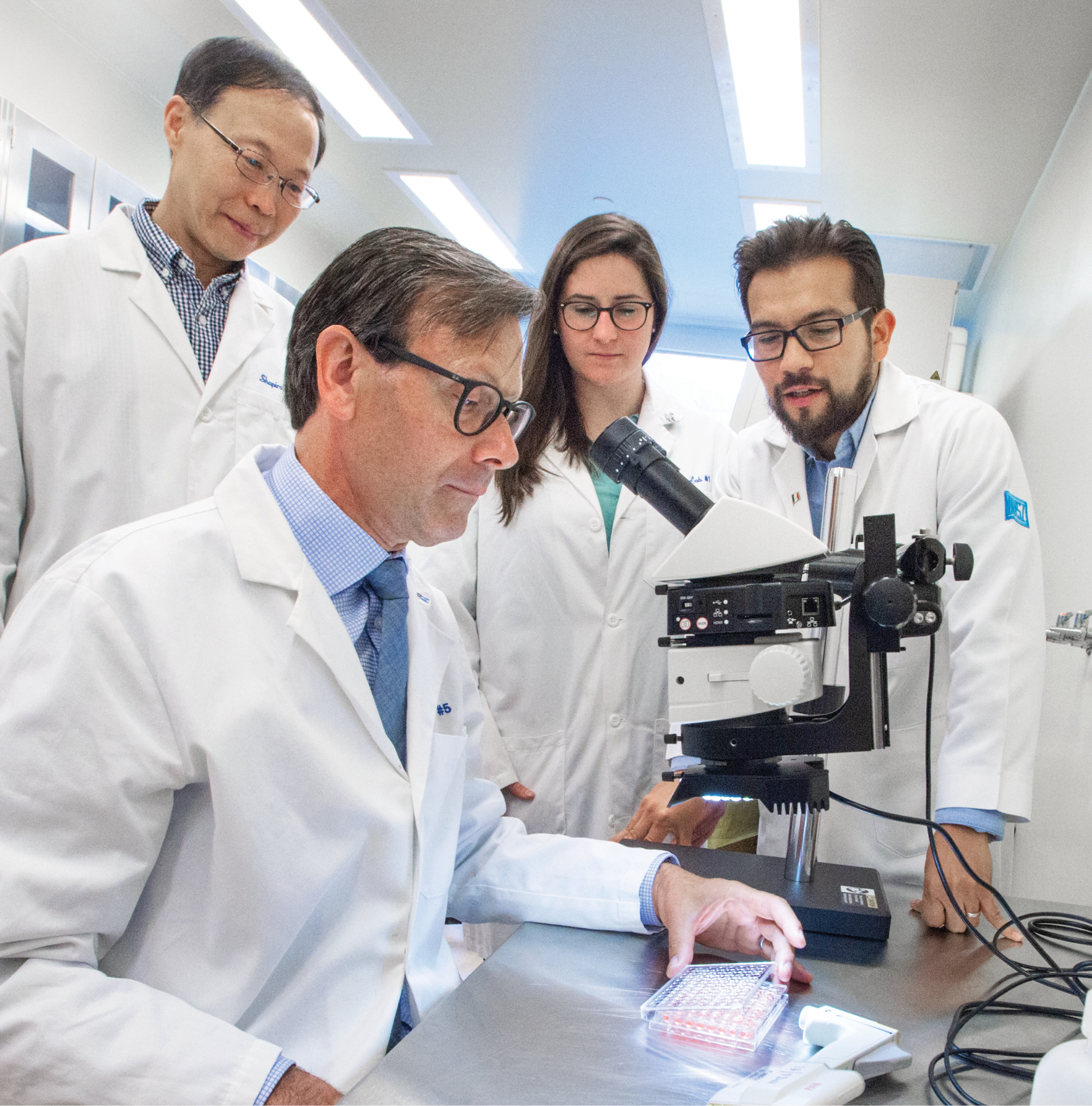
From left, James Shapiro, Gang Xu, Anissa Gamble and Braulio Marfil Garza are
conducting clinical trials using infusions of a patient's own T regulatory cells.
Photo: Richard Siemens
Researchers are in a race to solve two problems.
"We know islet transplantation works, but what we really want to do is develop an unlimited source of islets," says Rajotte. "One of the limitations is that there are just not enough human organs to go around. We also need to figure out ways to carry out the transplant without the need for anti-rejection drugs."
The limited supply of islets has been a significant barrier in the number of transplants that can be carried out. Korbutt and Andrew Pepper, PhD, an assistant professor of surgery at the U of A, are working to solve that problem by developing a safe source of islets from neonatal pigs for clinical use. The cells are quick to produce and relatively inexpensive in comparison to alternative therapies (i.e. stem cells) but need approval from Health Canada before they can be put to the test in human trials. Before that can happen, the researchers must first test the porcine islet cells in larger mammals to prove their safety.
They believe an even larger obstacle is the need for an effective strategy to reduce or remove the need for lifelong immunosuppression to prevent the body from rejecting the transplant. Currently islet transplants are only available to people with the most extreme cases of Type 1 diabetes because the risks of the transplant and taking immunosuppression are greater than the risk of simply taking insulin.
"It's been established that islet transplants are safe and efficacious," says Pepper. "We just need to make it more inclusive to the whole T1D population."
Testing localized immunosuppression
To get around the systemic immunosuppression problem, Korbutt and Pepper are developing their own approach using a biodegradable site under the skin (as opposed to the liver) for the islet transplant and releasing "bubbles" that over time administer anti-rejection drugs targeted only to the site of the transplant. They hope the approach will reduce or eliminate the need for chronic whole-body immunosuppression. The pair have an aim to test their work in clinical trials by 2023.
Shapiro is chasing solutions to the same problems but taking different paths to get there.
One approach his team is testing in a clinical trial uses infusions of a patient's own T regulatory cells (Tregs)-a component of the immune system that suppresses the immune responses of other cells. The Tregs are removed, expanded outside the body and then infused back into the patient as part of the islet transplant. It's hoped the procedure will result in greater islet survival and less need for immunosuppression drugs.
Resetting the immune system
A second trial Shapiro is leading is exploring the possibility of resetting the immune system in patients newly diagnosed with Type 1 diabetes. The idea is to switch off the immune attack on islets before most of the islet-producing cells are destroyed inside the pancreas. Clinicians then give repair treatments in hopes of rebooting insulin production.
"It's very preliminary but what we are seeing so far is patients are needing dramatically less insulin. If that can be replicated in lots more patients, that would also be a remarkable advance and avoids the need for cell transplant and immunosuppression," says Shapiro.
The approach has proven safe and Shapiro says his team now has approval from Health Canada to test it on adolescents in the near future, which will significantly speed up clinical findings from the trial.
">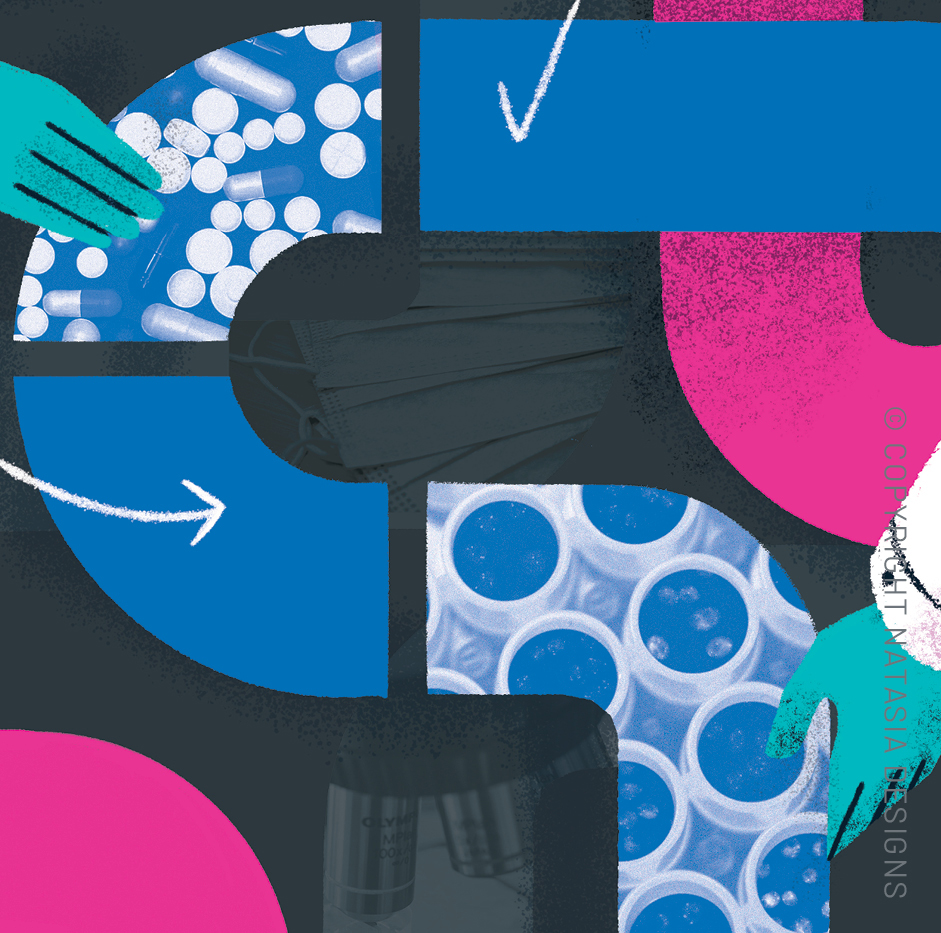
Transplanting stem cells
A third approach being tested is the use of stem cells, which can gradually become strongly producing islet cells when transplanted in the body. Shapiro has been working with U.S. company Viacyte since 2002 on several clinical trials. He is currently in the midst of the VC-02 trial, implanting stem cells under the skin of patients in porous devices designed to let blood vessels enter in, providing nutrients and greater survival of the cells inside. The first six patients in which the approach has been tested are showing measurable function of the transplanted cells under the skin-meaning insulin is being created.
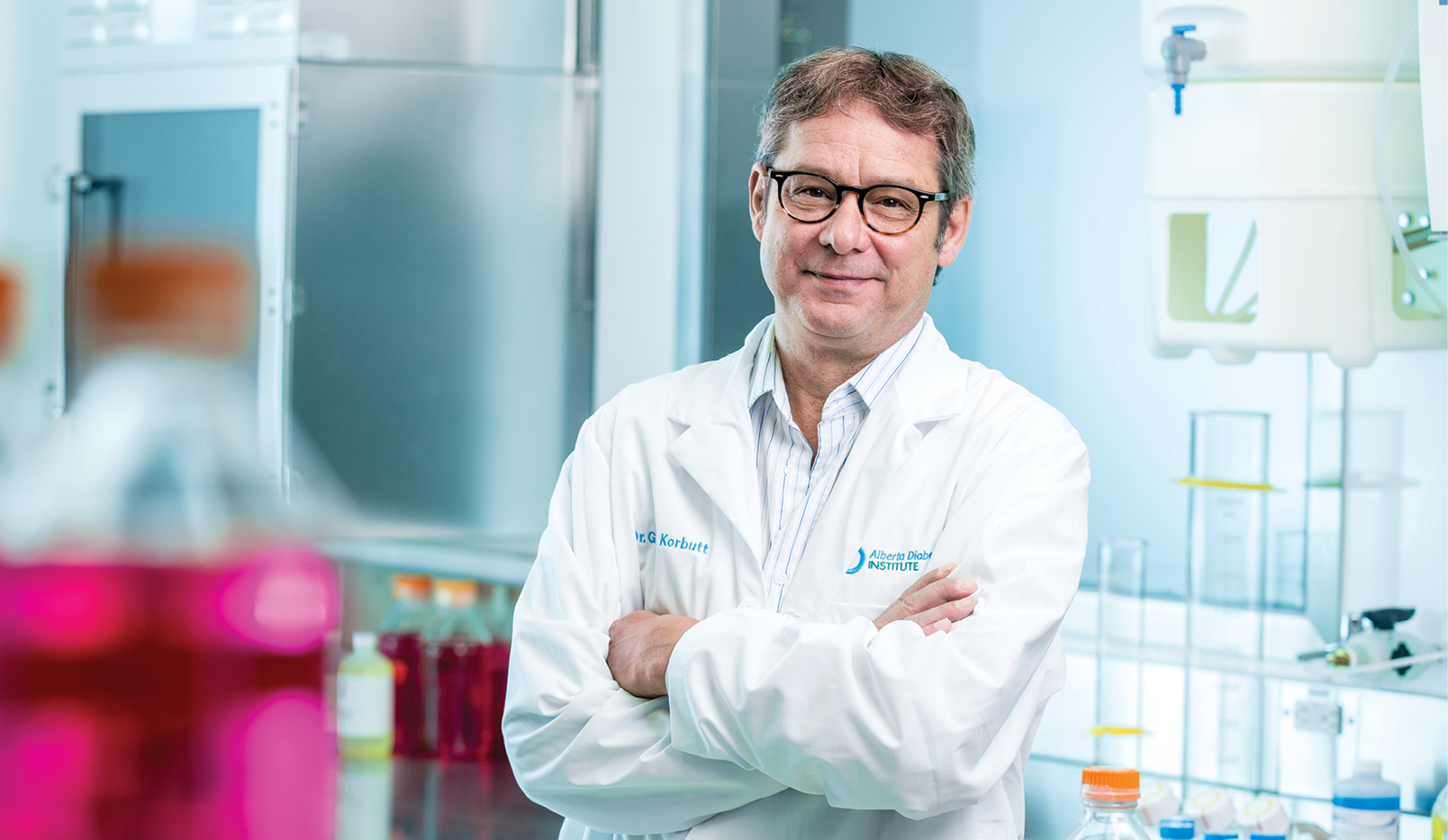
Greg Korbutt, scientific director of the Alberta Cell Therapy Manufacturing Facility and a
member of the Alberta Diabetes Institute and Alberta Transplant Institute.
Photo: Laughing Dog Photography
Shapiro says the next phase of the Viacyte trials will be gene editing the PEC-01 cells they transplant into patients to "make them immunologically stealthy and silent so that the immune system won't attack them." It will take about a year to generate the cells to a point where they are ready to put into patients, but if the researchers can show the gene edits don't cause defects in the ability of those cells to produce insulin, Shapiro believes it will be a major advance toward a functional cure.
Transforming the patient's own blood cells
A fourth course of action has excited Shapiro so much that in 2019, he changed his team's focus to making new islets from the blood of patients with Type 1 and Type 2 diabetes.
Shapiro describes the process as taking a patient's blood cells "back in time" as though they were developing in the embryo. In essence, the team "winds back" blood cells through the use of hormones and other growth factors into inducible pluripotent stem cells (iPS cells). From there, they "wind them forward" to functionally make them into islet-like cells.
The procedure, done over a 27-day period, could bypass the need for anti-rejection drugs. Shapiro's team is currently trying to cure diabetic mice through the approach and is seeking $15 million for a clinical trial that would use it to treat the first patients.
"Pause and think about it for a second. It's mind blowing that you can take a blood sample and turn it into islets," says Shapiro. "It's personalized medicine to the patient's own cells. If you told me we could do that 10 years ago, I'd say you were cuckoo. Can we really expand it up and treat patients? Well, the next few years are going to tell us."
Close to a cure
The researchers say they are closer than ever to a cure-and it's no longer just a cure for Type 1 diabetes they've got their sights set on. If they can break the code to avoid the need for anti-rejection drugs altogether, it would finally open the door to also treating patients with Type 2 diabetes-a population that makes up more than 90 per cent of all people living with diabetes.
While the path to a cure will still be filled with bumps, potholes and detours, U of A scientists and clinicians continue to forge ahead. At the Alberta Diabetes Institute-the largest organization of its kind in North America-about 40 scientists with support staff and graduate students numbering more than 300 are working on finding a better treatment or cure, says Rajotte.
"The U of A and the clinical islet program are still the world's epicentre for the therapy and are at the cutting edge of clinical trials," says Pepper. "We're moving research from the lab into patients and are doing so at the very highest of standards."
"There are no other centres in the world doing what we are doing today," adds Shapiro. "This work is like a big puzzle and right now the pieces seem to be scattered. But the picture is coming into place."